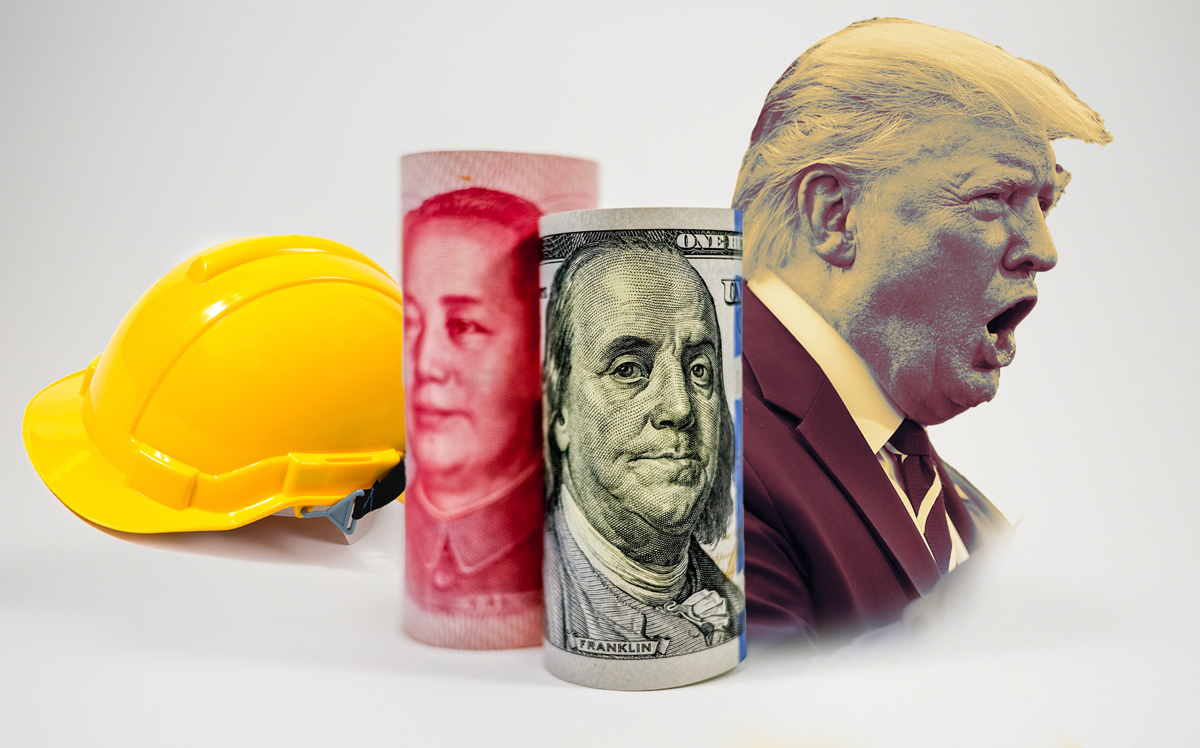Trending
General contractors are suffering under Trump’s new tariffs on Chinese goods
President Trump raised levies on $200 billion in Chinese imports from 10 percent to 25 percent in May

Anthony Rinaldi has learned first-hand what President Donald Trump’s trade war with China can mean for business. One of his eponymous firm’s current projects, backed by a Chinese-government-owned company, has recently stalled. He’s unsure when, or if, it will get back off the ground.
Delays are one among many headaches general contractors are grappling with as the trade war escalates, pushing up the cost of materials and casting uncertainty over planned and existing contracts.
“A number of projects that we have in our pipeline involve Asian developers, banks and investors,” Rinaldi said. “I’m not seeing that it’s going to get better. It’s going to get worse.”
In May, Trump ordered an increase in tariffs from 10 percent to 25 percent on $200 billion in Chinese imports — triggering China to retaliate by increasing tariffs on $60 billion in U.S. goods.
A study from the National Association of Home Builders said the affected goods included more than 400 items commonly used in the construction industry, including steel, bricks and aluminum.
Rinaldi said the tariffs had already raised costs. “The bulk of steel imports here in the States come from Asia — China being the primary marketplace — and the tariffs we’re seeing have had a gross impact on the overall cost of the trades with which we deal with steel,” he said.
“We’ve been seeing an increase of about 5 percent on the overall gross value of their numbers. That we’ve been seeing climbing over the last nine-to-12 months.”
On Tuesday, the government announced it had narrowed the amount of Chinese goods affected by the tariffs coming into effect in September. The tariff on those items will be delayed until December 15; some goods were removed from the list altogether.
The announcement followed pushback from consumer groups and businesses, who argued that everyday consumers stood to be affected.
Speaking to media Tuesday, Trump acknowledged this concern.
“We’re doing this for the Christmas season,” he told reporters. “Just in case some of the tariffs would have an impact on U.S. customers.”
In an uncertain climate, construction firms have been forced to adapt quickly to change.
“It’s a complicated issue because the tariffs are agnostic to the timing of contracts,” said Richard Wood, CEO of Plaza Construction.
“The projects impacted were contracted prior to the tariffs being implemented. They’re now facing additional cost.”
In May, Slate Property Group’s David Schwartz told TRD that the cost would ultimately hit consumers in the form of higher rents and pricier condos. He said Slate was looking to procure steel from other countries given the tariffs.
Similarly, Wood said on Tuesday that his company was now looking at sourcing materials from countries other than China, which was long considered the go-to for many low-cost materials.
While none of his existing projects had been thrown into jeopardy, Wood acknowledged there was a question mark over what the future holds.
“There isn’t one party negotiating this trade deal. There are two parties negotiating this deal and not knowing the mindset for completing a deal — assuming there’s a deal in the offing — makes it very difficult to plan for tariffs being there, being increased, or not being there at all,” he said.
In April, San Francisco unseated New York to take the title of most expensive city on earth to build, according to the latest Turner & Townsend International Construction Market Survey. The average building cost in New York was $368 per square foot, up from $362 per square foot in 2018. In terms of labour costs, New York still comes out on top — averaging $101.30 per hour.




